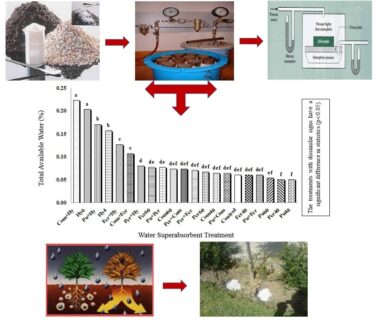Impact of compost and natural and synthetic water absorbents on soil hydraulic properties and vegetation indices in urban green spaces
Authors
-
Jahangir Abedi Koupai
*
 1
1
- Farid Reza Salimi 2
- Mohammad Mahdi Matinzadeh 1
- Mohammad Mahdi Dorafshan 2
Abstract
Purpose: In the current study, the effects of compost, natural, and synthetic superabsorbent amendments on soil water retention curve (WRC) were assessed by applying RETC software in a laboratory trial. Moreover, the effects of the mentioned materials on vegetation growth indices of four plants in three different soil textures of urban green space were evaluated.
Method: Using the randomized complete blocks-based split-plot design, the field experiment was conducted for a two-year period. The three soil textures were combined with 4 & 6gr/kg hydrogel, as well as pumice, compost, manure, and perlite at 40 & 60 gr/kg levels.
Results: According to WRC findings, there was more efficiency associated with hydrogel in sandy loam and loam soils compared to clay soil. Moreover, increased permanent wilting point water content (qpwp), saturated water content (qs), as well as available water (AW) were observed. Statistical analyses indicated a considerable difference in growth indices using perlite+compost in clay soil. Compared with the control soil, a 2.4-time enhancement of AW was observed in loam soil using Pumice+ Hydrogel. A significant growth indices difference was also found for loam soil using pumice+hydrogel. According to WRC results, the highest treatment rate was attributed to compost+hydrogel in sandy loam soils, which led to a 3.3-time enhancement of AW.
Conclusion: Statistical analyses revealed that compost+hydrogel could lead to the best treatment on growth indices in sandy loam textures.




